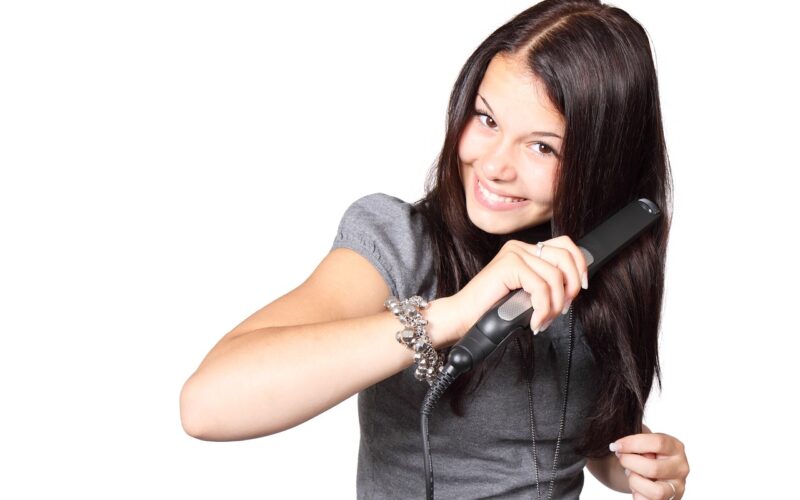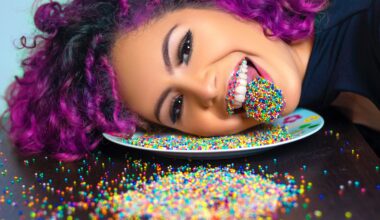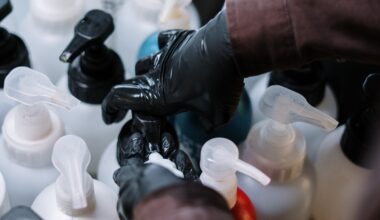Introduction
In today’s ever-evolving world of beauty, hair straightening stands out as a steadfast trend, embraced by women globally. From the boardroom to the runway, the allure of silky, straight locks has many diving deep into the world of straightening tools and treatments. However, like every rose has its thorn, this beauty trend isn’t without its pitfalls. As someone with two decades in the hair industry, I’ve witnessed firsthand the joys of a perfectly straightened mane and the sorrows of the repercussions some treatments can bring to women’s health. In this article, we’ll uncover the potential health concerns linked to hair straightening and arm you with knowledge for your next salon visit.
Key Takeaways
- Possible Side Effects: Understand the immediate concerns that arise from hair straightening, affecting both the scalp and the hair.
- Deep Dive into Health: It’s not just about brittle hair. Delve into the more profound health implications of long-term hair straightening.
- Steer Clear with Alternatives: Discover health-friendly methods to achieve that sleek look, without compromising your well-being.
History of Hair Straightening
Hair straightening, believe it or not, has roots (pun intended) that date back centuries. Women and men alike have always been fascinated by the allure of sleek, straight hair. Whether it was ancient civilizations using rudimentary flat irons made of two metal plates or the first chemical relaxers of the early 20th century, the pursuit of straightened hair has been a constant.
Evolution of Hair Straightening
Over the years, methods have evolved in tandem with technology and cosmetic science. What started with rudimentary tools transitioned to the introduction of heated aluminum plates in the early 1900s. By the mid-20th century, the invention of chemical relaxers marked a significant milestone, offering a more permanent solution to curls. Fast forward to the 21st century, and we’re met with a plethora of options – from ceramic flat irons to Keratin treatments, and the revolutionary Brazilian Blowout.
Yet, with every advancement came potential drawbacks. As the methods grew sophisticated, so did the complexity of the chemicals used, raising questions about their impact on women’s health.
The Chemistry Behind Hair Straightening
Hair, in its essence, is made up of keratin proteins, bound together by disulfide bonds. These bonds determine the natural state of our hair, whether curly, wavy, or straight. The act of hair straightening, be it temporary or permanent, revolves around manipulating these very bonds.
Hair Straightening Chemicals: The realm of chemical hair straighteners is vast. The early days saw the use of lye-based creams, which, while effective, were harsh on the scalp and hair. Modern treatments have transitioned to chemicals like sodium hydroxide, thioglycolate, and formaldehyde. These compounds work by breaking the disulfide bonds in hair, allowing it to be reshaped. Once the hair is straightened, the bonds are reformed in their new configuration, granting that sleek, straight look.
However, the very chemicals that provide these results come with a caveat. Formaldehyde, for instance, has been flagged by health organizations for its potential risks. While it ensures a long-lasting straightening effect, exposure can lead to scalp irritation, respiratory issues, and in prolonged instances, is even categorized as a potential human carcinogen.
Heat and Hair: For those avoiding chemicals, heat-based straightening is the go-to. But heat has its own set of concerns. High temperatures can strip the hair of its natural oils, leading to dryness, brittleness, and increased breakage. Over time, repeated heat exposure can result in permanently altered hair structure, leaving it limp and lifeless.
With this understanding of the chemistry at play, it’s clear that while the quest for straight hair might yield beautiful results, it doesn’t come without its share of concerns.
Immediate Side Effects on Scalp and Hair
The dreamy allure of straight hair sometimes clouds the reality of its aftermath. As someone who has catered to countless clients over two decades, I’ve seen a myriad of reactions post-straightening, some commonplace, and others quite alarming.
Scalp Irritations and Burns: One of the immediate and most noticeable side effects post chemical treatment can be scalp irritation. The chemicals used, while effective, are potent and can sometimes lead to burns or rashes, especially if left on for too long. The degree of irritation can vary from mild itching to painful burns, necessitating immediate medical attention.
Hair Breakage and Thinning: While straightening might grant a fuller look initially, the weakening of hair shafts due to chemical exposure or excessive heat can lead to breakage. Over time, repeated treatments can thin out your once-lush mane, leaving sparse patches and a reduced volume.
Change in Hair Texture: Not every straightening treatment goes as planned. There have been instances where hair, instead of straightening, becomes frizzy, dry, and unmanageable. This is especially true if there’s an incompatibility between the chemical used and the hair type or if the hair has undergone prior chemical treatments.
Hair Color Alterations: Those with colored or treated hair need to tread carefully. Some straightening treatments can react with hair dyes, leading to unexpected color changes, sometimes resulting in an uneven or undesirable hue.
Understanding these immediate side effects is crucial, not to deter one from straightening, but to make informed decisions. It’s about finding a balance between beauty desires and health implications. But beyond these immediate concerns lie deeper, long-term health issues.
Long-Term Health Concerns
While the immediate side effects of hair straightening are evident shortly after the treatment, there are more insidious concerns that might crop up over extended periods. The continuous exposure to chemicals and heat doesn’t just affect the hair and scalp, but might have deeper implications on a woman’s overall health.
Respiratory Issues: One of the primary culprits in many straightening treatments, especially the Brazilian Blowout, is formaldehyde. When heated, this chemical releases fumes that, when inhaled, can cause coughing, wheezing, and even asthma in some cases. Hairdressers and frequent salon-goers are particularly at risk.
Hormonal Imbalance: Some research suggests that certain chemicals used in hair straightening treatments can act as endocrine disruptors. These chemicals can interfere with the body’s hormonal system, potentially leading to reproductive issues, menstrual irregularities, and even breast cancer.
Allergic Reactions: With repeated treatments, some women develop allergies to the chemicals used. These reactions can range from skin issues like dermatitis to more severe systemic responses, including difficulty breathing.
Exposure to Carcinogens: As mentioned earlier, formaldehyde is categorized as a potential human carcinogen. Prolonged exposure, especially for professionals working in salons, can increase the risk of developing certain types of cancers.
The long-term implications of hair straightening can be daunting. But it’s essential to remember that not everyone will experience these effects, and much depends on the frequency of treatments, the products used, and individual health conditions. Knowledge is power, and being informed can guide one in making choices that align with both beauty aspirations and health considerations.
Long-Term Health Concerns
Prolonged and repeated exposure to certain hair straightening treatments is not just a concern for your hair’s health, but potentially your overall well-being. While the immediate repercussions might be evident soon after the treatment, there are deeper, insidious concerns that could arise over extended periods.
Respiratory Issues: Formaldehyde, commonly found in various straightening treatments such as the Brazilian Blowout, is especially concerning. When heated, this chemical releases fumes that can be inhaled, leading to symptoms like coughing and wheezing. In prolonged cases, it can even induce asthma, especially in hairdressers and frequent salon-goers.
Hormonal Imbalance: Research suggests that some chemicals utilized in hair straightening can function as endocrine disruptors. By interfering with our body’s hormonal system, these disruptors can pave the way for reproductive complications, irregular menstrual cycles, and even breast cancer.
Allergic Reactions: Over time, with repeated treatments, there’s a risk of developing allergies to certain chemicals. These allergies might manifest as skin issues, including dermatitis, or even severe systemic responses, such as respiratory distress.
Cancer Risk: The use of formaldehyde isn’t just a potential respiratory concern. Classified as a human carcinogen by many health organizations, its prolonged exposure raises eyebrows in the context of cancer risk. There have been instances where salon professionals, who are frequently exposed to high concentrations of these chemicals, report higher incidences of cancers, particularly of the nasal passages and lungs. Moreover, certain research studies have indicated a potential link between frequent use of hair straightening products and an increased risk of breast cancer among women. However, it’s crucial to understand that while these associations exist, further research is needed to confirm a direct causative relationship.
Being armed with this knowledge isn’t about inducing fear but enabling informed decisions. In the face of these potential health concerns, there are ways to achieve beauty goals without compromising health.
Healthier Alternatives to Traditional Hair Straightening
While the sleek appeal of straightened hair is undeniable, the associated health risks might have you reconsidering. But here’s the good news: the beauty industry has evolved, and there are safer alternatives that deliver comparable results without compromising your health.
Keratin Treatments: One of the popular and comparatively safer alternatives is the keratin treatment. By infusing the hair with natural proteins, it smoothens the cuticle and reduces frizz. While some keratin treatments might still have trace amounts of formaldehyde, many brands have developed formaldehyde-free versions. Always make sure to check the ingredient list and do your research before opting for any treatment.
Natural Hair Straightening Masks: Mother Nature offers remedies for almost everything, including wavy or curly hair. Ingredients like coconut milk, honey, and banana can serve as natural straightening agents. While the results might be temporary and not as sleek as chemical treatments, these natural concoctions nourish your hair, leaving it healthier in the long run.
Hair Straightening Brushes: A middle ground between flat irons and natural straightening, these brushes offer the benefit of straightening without the extreme heat damage. They distribute heat evenly, ensuring that no particular section of your hair gets overheated.
Low-Heat Styling: Remember, it’s not just the chemicals but also the excessive heat that can damage your hair. Consider using your flat iron or straightener at a lower temperature. While it might take a little longer, your hair will thank you in the long run.
Stay Informed: As a hairstylist with over 20 years of experience, I’ve witnessed the beauty industry’s continuous evolution. New treatments and products emerge regularly. It’s vital to stay updated, ask questions, and do your research before jumping onto any beauty trend.
Achieving the desired look without jeopardizing health is the ultimate goal. With these alternatives, you can enjoy the best of both worlds.
Conclusion
The journey to luscious, straight locks may sometimes feel like navigating a minefield of health risks and aesthetic rewards. But armed with the right knowledge, this expedition can be less perilous and more fulfilling. Over the past two decades in the hair styling industry, I have seen how informed decisions have not only sculpted beautiful styles but also nurtured the intrinsic health of many women.
Hair straightening, like any other beauty treatment, comes with its set of pros and cons. The immediate allure of sleek, manageable hair can sometimes eclipse the potential short-term and long-term health implications. From the immediate effects like scalp irritation and hair breakage to the more grave concerns like respiratory issues and cancer risk associated with certain chemicals, it’s imperative to weigh the beauty against the potential risks involved.
Furthermore, the landscape of beauty and hair care is not stagnant. New, healthier alternatives to traditional hair straightening have been emerging, offering a promise of style without sacrifice. Whether it’s the nourishing embrace of natural hair masks or the less harmful technology of hair straightening brushes, there’s a spectrum of choices awaiting the modern woman.
In the end, it’s about forging a path that honors both your aesthetic desires and health necessities. Your hair is a crown you never take off, so it’s worth investing in treatments that not only beautify but also nurture its essence. By staying informed, asking the right questions, and being open to exploring safer alternatives, you chart a course towards not just a beautiful exterior, but a healthier interior.
And as you tread this path, remember, the beauty of straight hair should never outweigh the importance of your health. It’s in the harmonious marriage of style and well-being that true beauty blossoms. So here’s to making informed choices on your quest for the perfect straight hair, without compromising on your health and well-being.




